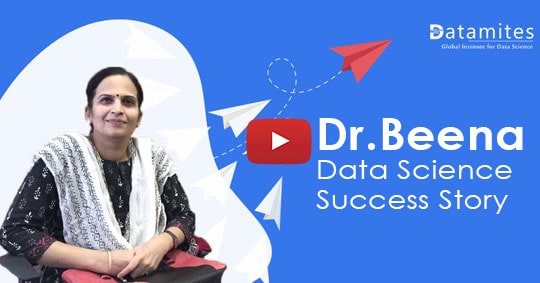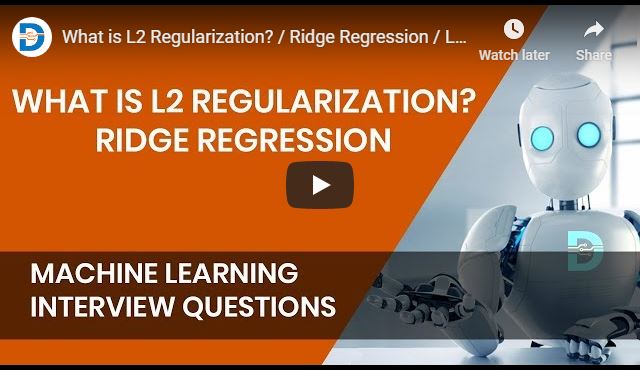Instructor Led Live Online
Self Learning + Live Mentoring
Customize Your Training

MODULE 1: DATA ENGINEERING INTRODUCTION
• What is Data Engineering?
• Data Engineering scope
• Data Ecosystem, Tools and platforms
• Core concepts of Data engineering
MODULE 2: DATA SOURCES AND DATA IMPORT
• Types of data sources
• Databases: SQL and Document DBs
• Managing Big data
MODULE 3: DATA INTEGRITY AND PRIVACY
• Data integrity basics
• Various aspects of data privacy
• Various data privacy frameworks and standards
• Industry related norms in data integrity and privacy: data engineering perspective
MODULE 4: DATA ENGINEERING ROLE
• Who is a data engineer?
• Various roles of data engineer
• Skills required for data engineering
• Data Engineer Collaboration with Data Scientist and other roles.
MODULE 1: PYTHON BASICS
• Introduction of python
• Installation of Python and IDE
• Python objects
• Python basic data types
• String functions part
• String functions part
• Python Operators
MODULE 2: PYTHON CONTROL STATEMENTS
• IF Conditional statement, IF-ELSE
• NESTED IF
• Python Loops Basics, WHILE Statement
• BREAK and CONTINUE statements
• FOR statements
MODULE 3: PYTHON PACKAGES
• Introduction to Packages in Python
• Datetime Package and Methods
MODULE 4: PYTHON DATA STRUCTURES
• Basic Data Structures in Python
• Basics of List
• List methods
• Tuple: Object and methods
• Sets: Object and methods
• Dictionary: Object and methods
MODULE 5: PYTHON FUNCTIONS
• Functions basics
• Function Parameter passing
• Lambda functions
• Map, reduce, filter functions
MODULE 1 : OVERVIEW OF STATISTICS
• Introduction to Statistics: Descriptive And Inferential Statistics
• a.Descriptive Statistics
• b.Inferential Statistis
• Basic Terms Of Statistics
• Types Of Data
MODULE 2 : HARNESSING DATA
• Random Sampling
• Sampling With Replacement And Without Replacement
• Cochran's Minimum Sample Size
• Types of Sampling
• Simple Random Sampling
• Stratified Random Sampling
• Cluster Random Sampling
• Systematic Random Sampling
• Multistage Sampling
• Sampling Error
• Methods Of Collecting Data
MODULE 3 : EXPLORATORY DATA ANALYSIS
• Exploratory Data Analysis Introduction
• Measures Of Central Tendencies, Measure of Spread
• Data Distribution Plot: Histogram
• Normal Distribution
• Z Value / Standard Value
• Empherical Rule and Outliers
• Central Limit Theorem
• Normality Testing
• Skewness & Kurtosis
• Measures Of Distance: Euclidean, Manhattan And Minkowski Distance
• Covariance and Correlation
MODULE 4 : HYPOTHESIS TESTING
• Hypothesis Testing Introduction
• Types of Hypothesis
• P- Value, Crtical Region
• Types of Hypothesis Testing: Parametric, Non-Parametric
• Hypothesis Testing Errors : Type I And Type II
• Two Sample Independent T-test
• Two Sample Relation T-test
• One Way Anova Test
• Application of Hypothesis Testing (Proposed)
MODULE 1: DATA WAREHOUSE FOUNDATION
• Data Warehouse Introduction
• Database vs Data Warehouse
• Data Warehouse Architecture
• Data Lake house
• ETL (Extract, Transform, and Load)
• ETL vs ELT
• Star Schema and Snowflake Schema
• Data Mart Concepts
• Data Warehouse vs Data Mart —Know the Difference
• Data Lake Introduction architecture
• Data Warehouse vs Data Lake
MODULE 2: DATA PROCESSING
• Python NumPy Package Introduction
• Array data structure, Operations
• Python Pandas package introduction
• Data structures: Series and DataFrame
• Importing data into Pandas DataFrame
• Data processing with Pandas
MODULE 3: DOCKER AND KUBERNETES FOUNDATION
• Docker Introduction
• Docker Vs.VM
• Hands-on: Running our first container
• Common commands (Running, editing,stopping,copying and managing images)YAML(Basics)
• Publishing containers to DockerHub
• Kubernetes Orchestration of Containers
• Docker swarm vs kubernetes
MODULE 4: DATA ORCHESTRATION WITH APACHE AIRFLOW
• Data Orchestration Overview
• Apache Airflow Introduction
• Airflow Architecture
• Setting up Airflow
• TAG and DAG
• Creating Airflow Workflow
• Airflow Modular Structure
• Executing Airflow
MODULE 5: DATA ENGINEERING PROJECT
• Setting Project Environment
• Data pipeline setup
• Hands-on: build scalable data pipelines
MODULE 1 : AWS DATA SERVICES INTRODUCTION
• AWS Overview and Account Setup
• AWS IAM Users, Roles and Policies
• AWS S overview
• AWS EC overview
• AWS Lamdba overview
• AWS Glue overview
• AWS Kinesis overview
• AWS Dynamodb overview
• AWS Athena overview
• AWS Redshift overview
MODULE 2 : DATA PIPELINE WITH GLUE
• AWS Glue Crawler and setup
• ETL with AWS Glue
• Data Ingesting with AWS Glue
MODULE 3 : DATA PIPELINE WITH AWS KINESIS
• AWS Kinesis overview and setup
• Data Streams with AWS Kinesis
• Data Ingesting from AWS S using AWS Kinesis
MODULE 4 : DATA WAREHOUSE WITH AWS REDSHIFT
• AWS Redshift Overview
• Analyze data using AWS Redshift from warehouses, data lakes and operations DBs
• Develop Applications using AWS Redshift cluster
• AWS Redshift federated Queries and Spectrum
MODULE 5 : DATA PIPELINE WITH AZURE SYNAPSE
• Azure Synapse setup
• Understanding Data control flow with ADF
• Data Pipelines with Azure Synapse
• Prepare and transform data with Azure Synapse Analytics
MODULE 6 : STORAGE IN AZURE
• Create Azure storage account
• Connect App to Azure Storage
• Azure Blob Storage
MODULE 7: AZURE DATA FACTORY
• Azure Data Factory Introduction
• Data transformation with Data Factory
• Data Wrangling with Data Factory
MODULE 8 : AZURE DATABRICKS
• Azure databricks introduction
• Azure databricks architecture
• Data Transformation with databricks
MODULE 9 : AZURE RDS
• Creating a Relational Database
• Querying in and out of Relational Database
• ETL from RDS to databricks
MODULE 10 : AZURE RDS
• Hands-on Project Case-study
• Setup Project Development Env
• Organization of Data Sources
• AZURE/AWS services for Data Ingestion
• Data Extraction Transformation
MODULE 1: GIT INTRODUCTION
• Purpose of Version Control
• Popular Version control tools
• Git Distribution Version Control
• Terminologies
• Git Workflow
• Git Architecture
MODULE 2: GIT REPOSITORY and GitHub
• Git Repo Introduction
• Create New Repo with Init command
• Copying existing repo
• Git user and remote node
• Git Status and rebase
• Review Repo History
• GitHub Cloud Remote Repo
MODULE 3: COMMITS, PULL, FETCH AND PUSH
• Code commits
• Pull, Fetch and conflicts resolution
• Pushing to Remote Repo
MODULE 4: TAGGING, BRANCHING AND MERGING
• Organize code with branches
• Checkout branch
• Merge branches
MODULE 5: UNDOING CHANGES
• Editing Commits
• Commit command Amend flag
• Git reset and revert
MODULE 6: GIT WITH GITHUB AND BITBUCKET
• Creating GitHub Account
• Local and Remote Repo
• Collaborating with other developers
MODULE 1 : DATABASE INTRODUCTION
MODULE 2 : SQL BASICS
MODULE 3 : DATA TYPES AND CONSTRAINTS
MODULE 4 : DATABASES AND TABLES (MySQL)
MODULE 5 : SQL JOINS
MODULE 6 : SQL COMMANDS AND CLAUSES
MODULE 7 : DOCUMENT DB/NO-SQL DB
MODULE 1: BIG DATA INTRODUCTION
• Big Data Overview
• Five Vs of Big Data
• What is Big Data and Hadoop
• Introduction to Hadoop
• Components of Hadoop Ecosystem
• Big Data Analytics Introduction
MODULE 2: HDFS AND MAP REDUCE
• HDFS – Big Data Storage
• Distributed Processing with Map Reduce
• Key Terms: Output Format
• Partitioners Combiners Shuffle and Sort
• Hands-on Map Reduce task
MODULE 3: PYSPARK FOUNDATION
• PySpark Introduction
• Resilient distributed datasets (RDD),Working with RDDs in PySpark, Spark Context , Aggregating Data with Pair RDDs
• Spark Databricks
• Spark Streaming
MODULE 1: SPARK SQL and HADOOP HIVE
• Introducing Spark SQL
• Spark SQL vs Hadoop Hive
• Working with Spark SQL Query Language
MODULE 2: KAFKA and Spark
• Kafka architecture
• Kafka workflow
• Configuring Kafka cluster
• Operations
MODULE 3: KAFKA and Spark
• Creating an HDFS cluster with containers
• Creating pyspark cluster with containers
• Processing data on hdfs cluster with pyspark cluster
MODULE 1: TABLEAU FUNDAMENTALS
• Introduction to Business Intelligence & Introduction to Tableau
• Interface Tour, Data visualization: Pie chart, Column chart, Bar chart.
• Bar chart, Tree Map, Line Chart
• Area chart, Combination Charts, Map
• Dashboards creation, Quick Filters
• Create Table Calculations
• Create Calculated Fields
• Create Custom Hierarchies
MODULE 2: POWER-BI Basics
• Power BI Introduction
• Basics Visualizations
• Dashboard Creation
• Basic Data Cleaning
• Basic DAX FUNCTION
MODULE 3: DATA TRANSFORMATION TECHNIQUES
• Exploring Query Editor
• Data Cleansing and Manipulation:
• Creating Our Initial Project File
• Connecting to Our Data Source
• Editing Rows
• Changing Data Types
• Replacing Values
MODULE 4: CONNECTING TO VARIOUS SOURCES
• Connecting to a CSV File
• Connecting to a Webpage
• Extracting Characters
• Splitting and Merging Columns
• Creating Conditional Columns
• Creating Columns from Examples
• Create Data Model
Data Engineer Course is designed as job oriented course for Data Engineering roles. The Data Engineering is the foundation for Data Science work flow, covering data gathering, manipulation, processsing and transforming data to get it read for further Data Science processes. Data Engineer course apart from covering key data engineering concepts also covers Python Language, Statistics, Big Data popular frameworks.
Data Engineer course bundled with project mentoring and internship facility.
Data engineering is the process of developing and constructing large-scale data collection, storage, and analysis systems. It's a wide-ranging field with applications in almost every industry.
To become a data engineer, the first and most important step is to get appropriate training in the field. Obtaining a thorough understanding of the data science and data engineering domain through a certification course and thereby upskilling the talents is a must for landing a job in the field.
Attending Data Engineer Courses, which may last anywhere from three to twelve months, can help you become a data engineer. The course curriculum, on the other hand, varies based on the degree or certification desired. 3-month courses can provide you with important Data Engineer experience and internship possibilities, leading to entry-level positions at top businesses.
The Data Engineer Course is the one to take if you want to work in the business because it certifies you as an expert in the field of data science. After finishing our comprehensive programme, you'll have the skills you need to succeed as a data engineer, as well as a job-ready portfolio to show off during the interview process.
A bachelor's degree in computer science, software or computer engineering, applied math, physics, statistics, or a related discipline is required for entry into this field. To even qualify for most entry-level roles, you'll need real-world experience, such as internships.
The cost of Data Engineer Training in the US can be anywhere from 257.68 USD to 1030.71 USD, depending on the course level and type of training you choose. Data Engineer Training in the UK can cost anywhere from 205.15 GBP to 820.60 GBP and the fees for Data Engineer Training in India can range from 20,000 INR to 80,000 INR.
DataMites® is the best institute for comprehensive training in courses in data engineering, data science, artificial intelligence, and other related fields. DataMites® collaborates with world-renowned Data Engineer professionals to build and offer an extensive crafter training curriculum.
Data engineering isn't always an entry-level role. Instead, many data engineers start off as software engineers or business intelligence analysts. As you advance in your career, you may move into managerial roles or become a data architect, solutions architect, or machine learning engineer.
Some of the essential skills of a data engineer are coding, data warehousing, database system, data analysis, critical thinking, understanding of machine learning and more.
The national average salary for a Data Engineer is USD 1,12,493 per year in the United States. (Glassdoor)
The national average salary for a Data Engineer is £41043 per annum in the UK. (Glassdoor)
The national average salary for a Data Engineer is INR 9,80,000 per year in India. (Glassdoor)
The national average salary for a Data Engineer is CAD 81,870 per year in Canada. (Payscale)
The national average salary for a Data Engineer is AUD 98,646 per year in Australia. (Payscale)
The national average salary for a Data Engineer is 63,515 EUR per annum in Germany. (Glassdoor)
The national average salary for a Data Engineer is CHF 129,009 per year in Switzerland. (Glassdoor)
The national average salary for a Data Engineer is AED 171,553 per year in UAE. (Payscale)
The national average salary for a Data Engineer is SAR 180,000 per year in Saudi Arabia. (Payscale.com)
The national average salary for a Data Engineer is ZAR 453,460 per year in South Africa. (Payscale.com)
Data engineers design and manage the systems and structures that store, retrieve, and organise data, whereas data scientists analyse that data to predict patterns, gain business insights, and answer questions that are relevant to the organisation.
Data Wrangling, such as reshaping, aggregating, and connecting disparate sources, small-scale ETL, API interaction, and automation, are all part of Python for Data Engineering. Python is popular for a variety of reasons. One of the most significant advantages is its accessibility.
Overall, becoming a data engineer is an excellent career choice for people who enjoy paying attention to detail, adhering to engineering requirements, and creating pipelines that transform raw data into useful insights. A profession in data engineering provides good earning potential and job security.
A career as a Data Engineer is financially rewarding, stable, and physically hard. The role of a Data Engineer is crucial in realising the full potential of data in every organisation. According to a poll, it is one of the fastest-growing professions in the globe, with over 88.3 percent growth in job postings in 2019 and over 50% year-over-year growth in numerous open positions.
It's a good idea to start with an internship before applying for full-time data science employment. Data engineering requires practice, thus internships are a must for gaining experience and broadening practical knowledge before full-time employment. Companies are more likely to provide internships to people who have never worked before. It will be much easier for you to obtain an entry-level position in the organisation after finishing an internship.
It's also an important stage in the hierarchy of data science requirements: without data engineers' architecture, analysts and scientists won't be able to access or work with data. And as a result, corporations risk losing access to one of their most precious assets. Data engineering is the fastest-growing position in technology in 2019, according to the Dice 2020 Tech Career Report, with a 50 percent rise in accessible jobs year over year.
Data engineers face the difficult task of reconciling immediate needs with a longer-term view of where data demands will lead the systems they manage. With each new architecture you create, there's a persistent dread that you've trapped yourself into a technical dead-end. Without a doubt, data is essential for expanding your business and gaining important insights. Data engineering, often known as information engineering, is a software-based strategy for developing information systems.
It was an excellent decision. You've chosen a wealthy, secure, and demanding career path. As of June 2022, there are about 44,209 Data Engineer-related job openings globally. (Indeed.com) According to a recent poll, there has been a considerable surge in demand for data engineering job positions. You'll utilise your programming and problem-solving skills to create scalable solutions.
DataMites® Data Engineer Courses are carefully crafted to teach Data Engineering from scratch. The course henceforth can be taken by anyone. This career path is for those who are searching for a career shift, data professionals who want to expand their skill set for the next promotion, and college students who want to get a job.
In the data engineering domain there is a lot of room for advancement in terms of learning, capacity, and pay. Aspirants can enrol at DataMites® for Data Engineer Course Online, we provide in-depth training for your further career.
The duration of the Data Engineer Course is 6 months, totalling 120 hours of training. Training sessions are imparted on weekdays and weekends. You can choose any as per your availability.
No, a PG degree is not necessary but having prior knowledge of Mathematics, Statistics, Economics or Computer Science can be highly beneficial.
The cost of Data Engineer training in the United States can range from 567.01 USD to 201.61 USD, depending on the course level and type of training you choose. In Europe, the cost of a Data Engineer training course can range from 4187.38 Euro to 526.98 Euro. Depending on the course level and type of training you choose, the cost of Data Engineer training in India can range from INR 15,645 to 44,000 INR.
Yes, DataMites® do provide Data Engineer Classroom Courses in the Indian states of Bangalore, Chennai, Pune, Hyderabad and Kochi. We would be pleased to host one in other locations, ON-DEMAND of the applicants as according to the availability of other candidates from the exact location.
We are determined to provide you with trainers who are certified and highly qualified with decades of experience in the industry and well versed in the subject matter.
We offer you flexible learning options ranging from live online, self-learning methods to classroom training. You can choose as per your availability.
Our Flexi-Pass for Data Engineer training will allow you to attend sessions from DataMites® for 3 months related to any query or revision you wish to clear.
We will issue you an IABAC®, NASSCOM Future Skills and JAINx certifications that provide global recognition of relevant skills.
If you take the exam online at exam.iabac.org, the results are available immediately. According to IABAC guidelines, e-certificate issuing takes 7-10 business days.
Of course, after your course is completed, we will issue you a Data Engineer Course Completion Certificate.
Yes. Photo ID proofs like a National ID card, Driving license etc. are needed for issuing the participation certificate and booking the certification exam as required.
You don't need to worry about it. Just get in touch with your instructors regarding the same and schedule a class as per your schedule. In the case of Data Engineer Training Online, each session will be recorded and uploaded so that you can easily learn what you missed at your own pace and comfort.
Yes, a free demo class will be provided to you to give you a brief idea of how the training will be done and what will be involved in the training.
The course price must be paid in full to reserve your spot for the complete course as well as arrange your certification examinations with IABAC. If you have any unique limits, your DataMites® relationship manager will assist you with part payment agreements.
All certificates can be verified at DataMites®.com using your unique certification number. Alternatively, you may send an email to care@DataMites®.com.
Yes, we have a dedicated Placement Assistance Team (PAT) who will provide you with placement facilities after the completion of the course.
Learning Through Case Study Approach
Theory → Hands-on → Case Study → Project → Model Deployment
Yes, of course, you must make the most of your training sessions. You can of course ask for a support session if you need any further clarification.
We accept payment through;
The DataMites Placement Assistance Team(PAT) facilitates the aspirants in taking all the necessary steps in starting their career in Data Science. Some of the services provided by PAT are: -
The DataMites Placement Assistance Team(PAT) conducts sessions on career mentoring for the aspirants with a view of helping them realize the purpose they have to serve when they step into the corporate world. The students are guided by industry experts about the various possibilities in the Data Science career, this will help the aspirants to draw a clear picture of the career options available. Also, they will be made knowledgeable about the various obstacles they are likely to face as a fresher in the field, and how they can tackle.
No, PAT does not promise a job, but it helps the aspirants to build the required potential needed in landing a career. The aspirants can capitalize on the acquired skills, in the long run, to a successful career in Data Science.











